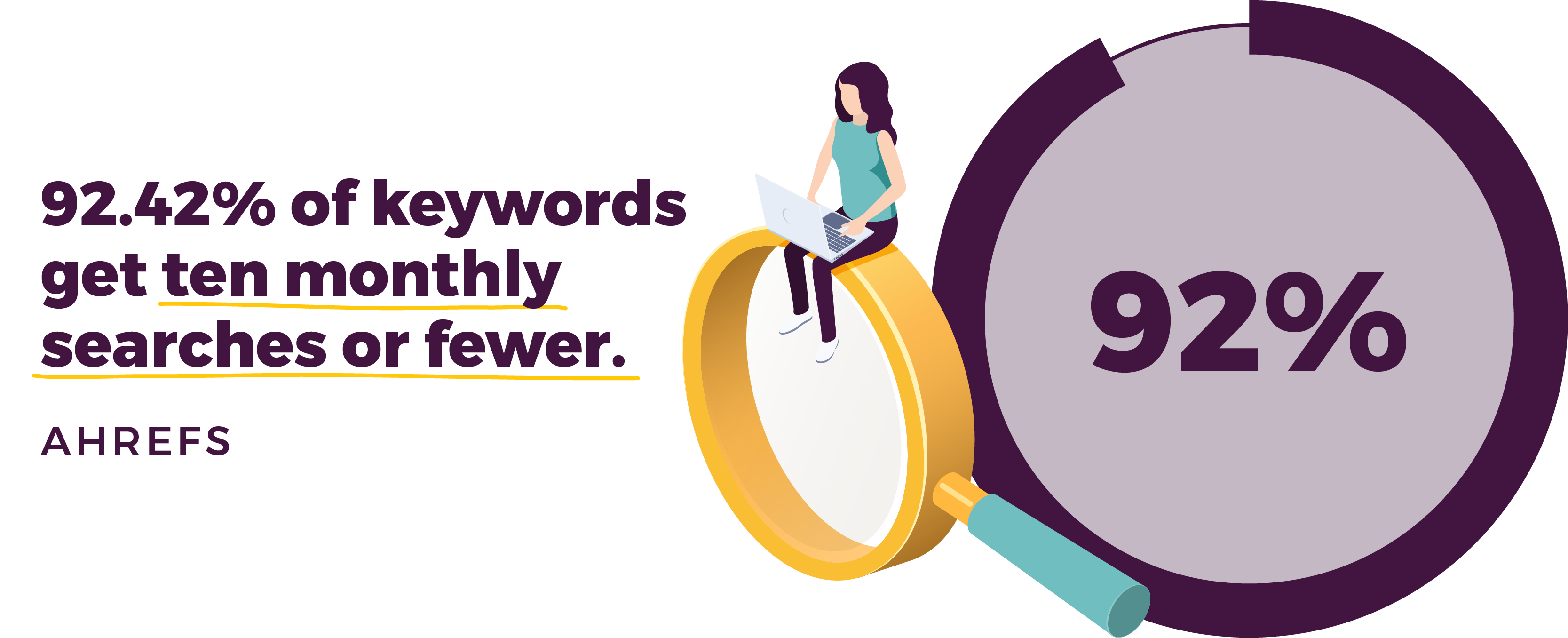Whether you have existing web content that you want to improve or you’re staring at a blank screen with a blinking cursor, these five basic writing tips will provide a little inspiration and know-how to get you started.
How to write outstanding web content.
1. Think “user first” when writing content for your website.
When you sit down to write your website content, who should be at the top of your mind? Hint: Not your company or organization. Not your high school English teacher. Not your boss breathing down your neck. It should be your users—the very people that your website is built for.
What do they need to know? What questions will they have when they come to your website, or what information will they be looking for? How can you educate them? What problems can you solve? These are the questions you want to consider.
A common mistake many brands make is creating a website that’s one big online advertisement—it’s all about self-promotion. Sure, you do want to explain what you do, what you offer and why you’re the best choice. But do that with your user in mind and with an others-centered approach. That’s going to warm them up to you much quicker than using your website as one big pat on the back (plus, Google will like it better too).
2. Populate your web content with the correct keywords.
First, let’s define “keyword.” It’s a “word or phrase that people will type in a search field to help them find what they’re looking for.” It’s really that simple. The trickier part is figuring out which keywords to use on your website in order to rank in relevant search results. That will typically require a little research, which we’ll talk about later.
The key message here is that keywords are indeed important, and you’ll want to sprinkle them liberally throughout your website once you know what they are. Include them in the copy, the headlines—wherever it makes sense and seems natural.
For example, a local humane society might decide to use keywords like pet adoption, family pet, animal in need, rescuing a dog or adopting a dog. These are the terms that people could use when they’re searching for a humane society, which are exactly what you want your keywords to be: search terms.

3. But don’t go overboard with keywords on your website.
Too much of a good thing is a bad thing in this situation. Using too many keywords amounts to what’s known as keyword stuffing, which can hurt your efforts to rank. Low-quality, keyword-stuffed content is not a good SEO strategy; Google will see through it and penalize you for it. Remember the “Google likes what’s good for users” sentiment? Shoot for conversational and relevant copy with keywords placed naturally where they fit, not forced into spots where they don’t.
4. Be concise with your web content.
On the web where users often skim more than they read word-for-word, brevity wins. Include keywords where appropriate, of course, but get rid of filler words and long chunks of text, which can look intimidating or boring.
Some tips on how to stay concise:
- Use more powerful verbs (active words) and fewer adjectives (describing words).
- Keep your sentences short—aim for fewer than 16 words per sentence.
- Eliminate industry jargon and clichés where possible, which usually don’t mean much to your audience. The exception is if, in that jargon, there’s a keyword you want to rank for—then use it strategically.
- Limit each paragraph to just one idea. Short, meaty paragraphs are easier to skim than long-winded ones, which is how most people read online (as opposed to word-for-word).
5. Break up the web page with subheads, sections and bullets.
Formatting your website content with plenty of space and copy breaks helps visitors digest and understand your message, which will ultimately lead to greater conversions on your website. Write relevant content in bite-sized pieces to make it more palatable for busy readers by using formats like these.
Bulleted lists.
- They’re easy for readers to scan.
- They’re useful and straight to the point.
- They provide a visual break for your reader.
Q&A pieces.
Q: Need new ideas for your blog?
A: A timely Q&A with a third-party expert can add credibility to your website and mix things up.
Infographics.
They’re a great way to show stats and visually convey material that might otherwise be boring. They also give you a way to display a lot of info in one place.
Photo and caption.
One word: Instagram. There’s a reason people can get lost in that social media platform for an hour—the content is easy to consume. A photo with a caption (or hashtag) is a great way to quickly share something cool about your company or organization.
These tips give you a good starting point for writing user-friendly, helpful and relevant content for your website visitors. Real talk: If you hate to write—like, it makes you break out in hives, or your palms sweat the minute you touch your keyboard—it might be good to hire a copywriter to create your web content. Why put yourself through that stress and agony when there are people who actually love to work with words for a living? And, if you want to learn how to write SEO (and user)-friendly content, download our how to write for SEO ebook.

